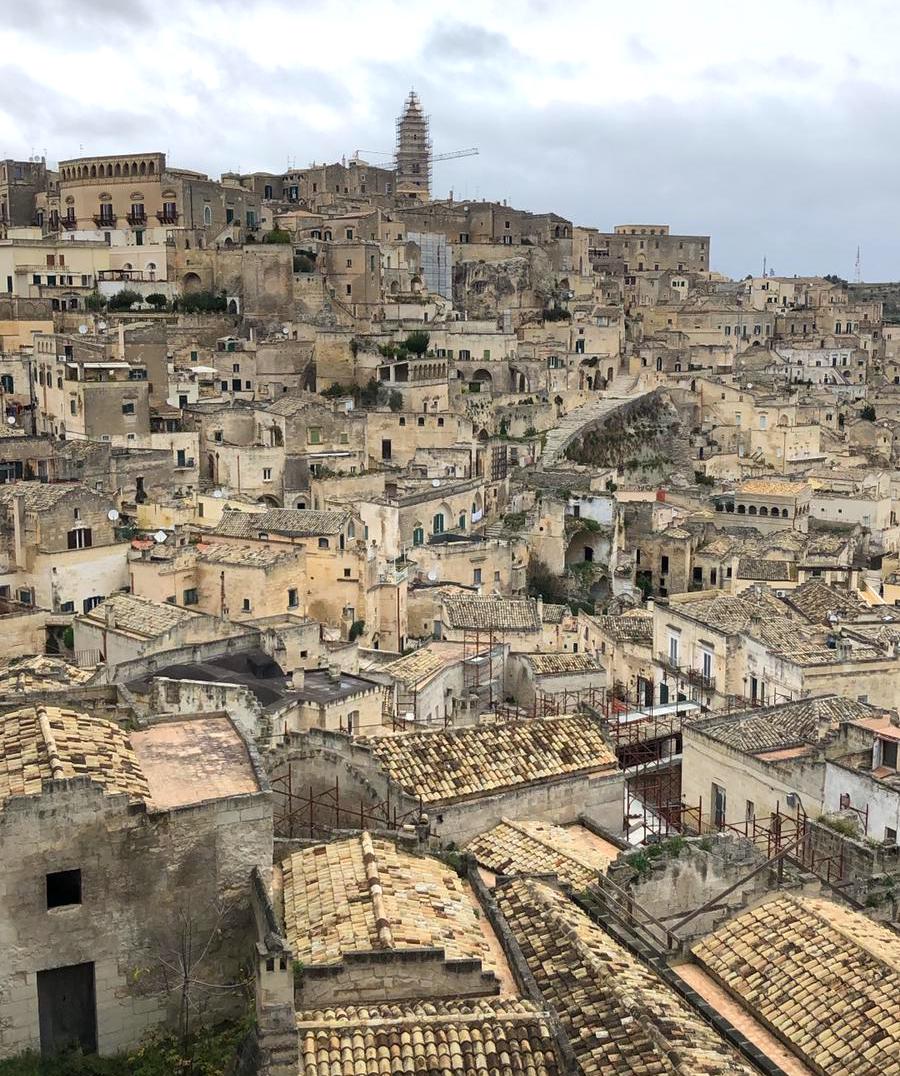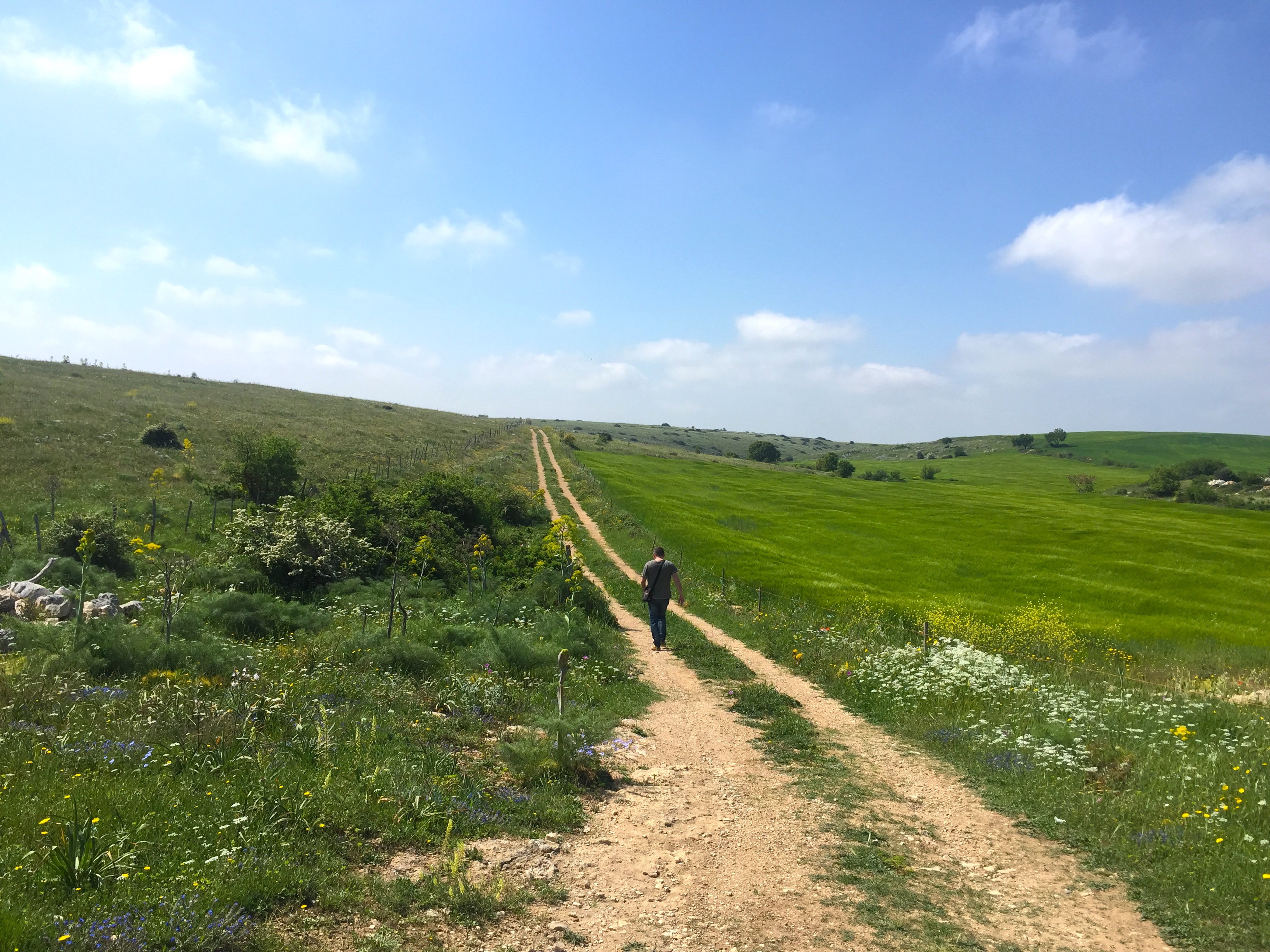The South of Italy is a land rich in splendid tourist destinations: each one, with its monuments and traditions, tells a truly ancient past.
It is a land that deserves to be discovered slowly, exploring the culture of the place and getting in close contact with the local people: only in this way, you can breathe its most authentic soul.
It is for this reason that we suggest you to explore it on foot, to have the opportunity to quietly enjoy the beauty of this region and journey itself: an exciting (and sustainable) tour in the South of Italy.
Trails in the South of Italy: highlights you cannot miss
Experiencing a walking tour in the sunniest part of Italy is a unique occasion to feel tangibly an incredible variety of landscapes and traditions, to be discovered step by step.
We recommend you a trekking route between Matera and Alberobello: a trip full of surprises that starts from Basilicata and arrives in Puglia, the Heel of Italy.
Matera and Alberobello are two emblematic cities that, despite their diversity, express the soul of Southern Italy in all its authenticity. The international resonance that the two cities boast can be explained by the particular beauty of the alleyways and the buildings. Each house, each wall and each street narrate really ancient stories, while scents and flavours of a centuries-old culinary tradition evoke unique sensory emotions.
The final destination of the journey, as proposed by Slow Active Tours, is Otranto, a famous tourist destination in Salento and the easternmost town in Italy: the Punta Palascia promontory is the first point in of the Italian peninsula to see the sunrise.
Matera 2019: from “Shame of Italy” to European Capital of Culture

Today, the ancient charm of Matera amazes tourists from all over the world with its houses nestled in the Sassi (“Stones”) and a huge number of churches that dot the town. Here, time seems to have stopped, the atmosphere you breathe in the old town is kind of surreal.
The revaluation of the historic heritage of Matera led the city to be recognised as an UNESCO site and, then, in 2019, to obtain the title of European Capital of Culture.
However, the reputation of the chief town of Basilicata has not always been so good. In 1945, Carlo Levi offered a pitiless portrait of the city in his book “Christ stopped at Eboli”, bringing to the attention of public opinion the dramatic situation in which the inhabitants of the Sassi of Matera found themselves.
Misery and the unsanitary conditions that characterised the village led Togliatti to define Matera the “national shame”. In 1952, De Gasperi ordered the eviction of the Sassi, to allow the rehabilitation of the site.
A walk on foot through the two main quarters of Matera, Sasso Barisano and Sasso Caveoso, offers a really suggestive experience. Throughout the years, many measures were actuated, in order to enhance the entire old town, that today is a real jewel. Matera has also been the set of very famous movies, that contributed to bring the historic heritage of Matera to the fore. Among these, we cannot miss to mention “The Gospel according to St. Matthew” by Pasolini, “King David” with Richard Gere and “The Passion of the Christ” by Mel Gibson.
What to visit in a walk tour in Matera
Matera is beautiful and the best way to visit it is absolutely on foot – also because a large part of the old town is car-free.
Walking through the alleyways of the Civita, between Sasso Barisano and Sasso Caveoso, allow you to penetrate in the discovery of the authentic old town. Here, the houses, even though they have been restructured, still preserve their ancient rock-hewn structure.
If you would like to learn more about the history of Matera, we suggest you a stop at Casa Noha: it is an ancient private house, nestled in Sasso Caveoso, which today hosts a museum of the Italian National Trust FAI. The visitor will have the opportunity to retrace the historic steps of the city through an immersive multimedia tour. Moreover, an app has been realized, with a virtual guide through the Invisible Matera.
In addition to the beautiful Cathedral, you cannot miss the numerous and evocative churches of Matera. The tour proposed by Slow Active Tours winds through the so-called “Park of the Rock Hewn Churches”.
Curiosities and tips about Matera
The bread of Matera is very famous: you can buy it in one of the many bakeries in the city.
In the not too distant past, local people used to knead the bread at home and then brought it to a public oven for baking. This is the reason why the bread stamp was a very common tool: it was a wooden object used for personalising the bread, imprinting the initials of the family or another sign of recognition on the dough.
The warm smell of bread will accompany your walking tour, one of the most exciting walks of Italy, leading you out of the city of Matera and allowing you to discover the surrounding lush nature. Inside the Sassi, the lack of vegetation makes summer be a little warmer and winter a little colder. Anyway, you should better take a good supply of water with you!
A Tibetan bridge suspended over the Gravina, connects Sassi to the Park of Murgia Materana, offering a really breath-taking view. This pedestrian bridge was inaugurated in 2016 and has attracted a huge number of people (even women with high heels!), but, unfortunately, today it is closed: a great pity for those who love trekking!
However, you could take advantage of our shuttle to visit the two Murge, Murgecchia and Murgia Timone.
Walking between Matera and Alberobello: heading the South of Italy
Going ahead on your walking tour toward Puglia region, you will get to last offshoot of the Murge, in Valle d’Itria. Here you will find Alberobello.
Alberobello is worldwide famous for its typical trulli, which have been recognised as World Heritage by UNESCO. They are ancient limestone buildings, composed of a white main body surmounted by a grey conical roof in dry stone.
These rural buildings are spread in the whole area of Valle d’Itria, but the maximum concentration is in the town of Alberobello. Walking through the alleyways of this Apulian town, you will feel like you are in a fairy village. The care for details in every corner allows you to enjoy really pretty views and to take beautiful pictures to share with your friends.
If you follow the tour proposed by Slow Active Tours, you will cross a part of the Apulian Aqueduct to get from Matera to Alberobello. The trail follows the historic pipes of the aqueduct, from Caposele, in Campania, to Santa Maria di Leuca, the southernmost town in Puglia. The tour is really suggestive, since the walk as a narrative character: step by step, you can admire many inspection shafts, the cast iron fountains and the small manholes marked “Acquedotto Pugliese”, discovering the traces of one of the biggest infrastructures of Southern Italy. Moreover, the trail connects very interesting places from a historical and cultural point of view, such as Venosa, Castel del Monte and Alberobello.
Curiosities about trulli: in Valle d’Itria and in the world
Today, trulli are no more used as rural shelters by the farmers of Valle d’Itria. They have been restored and enhanced, becoming a real tourist attraction. Today, many trulli host souvenir shops, restaurants and even luxury accommodation facilities!
An American friend of ours, who travelled with Slow Active Tours, sent us the pictures of a trullo-like building found in Kings Canyon National Park, in the Sierra Nevada Mountains in California. The style is clearly inspired by Italian trulli, but the roof pitch is less steep. The construction, which dates back to 1930, is a tribute to John Muir, a Scottish engineer and natural scientist, who committed his life to the exploration of the wild nature. His diaries contain the witness of a passionate environmental activism.

But not only in America: there are trulli-like buildings also in Harran, a Turkish city twinned with Alberobello. The two types of constructions differ in material and in colour. The red ochre Turkish “trulli”, indeed, are made by earthenware, but the architectonical shape is really similar. According to a historical theory, during the Byzantine domination, Eastern communities settled in Puglia and imported this architectonical style, which boasts biblical origins!
Locorotondo and Martina Franca: stops and flavours you cannot miss
You can easily reach Locorotondo and Martina Franca from Alberobello, in one of the most beautiful walks of Southern Italy.
Locorotondo, one of the prettiest towns in Italy, is a small jewel in Valle d’Itria, where excellent wine is produced. It is the ideal place for tasting experiences, to live in an absolutely suggestive scenery. The panoramic terrace is the privileged point from which to enjoy the pleasant Apulian atmosphere, with a breath-taking view over the entire Valle d’Itria. In Locorotondo you can also admire very particular buildings, the cummerse, unusual houses with a pointed roof.
Martina Franca is in the heart of Puglia and expresses all the artistic beauty of this region through Baroque churches and palaces. The old town is very charming, but another reason to have a stop in Martina Franca is the rich gastronomic tradition. Do not miss the famous cold cuts, the tasty meat and the delicious bocconotto. Bocconotto is a typical Southern Italy sweet made with short pastry with various fillings. It is similar to pasticciotto leccese, but it is not the same: we suggest you to taste both, so you can choose which one you prefer!
The tour Beautiful South: Sassi, Trulli and Baroque includes also tastings: one of EVO oil, one of wine and one of typical product by a farmhouse. Slow Active Tours offers also the luggage transportation service.





